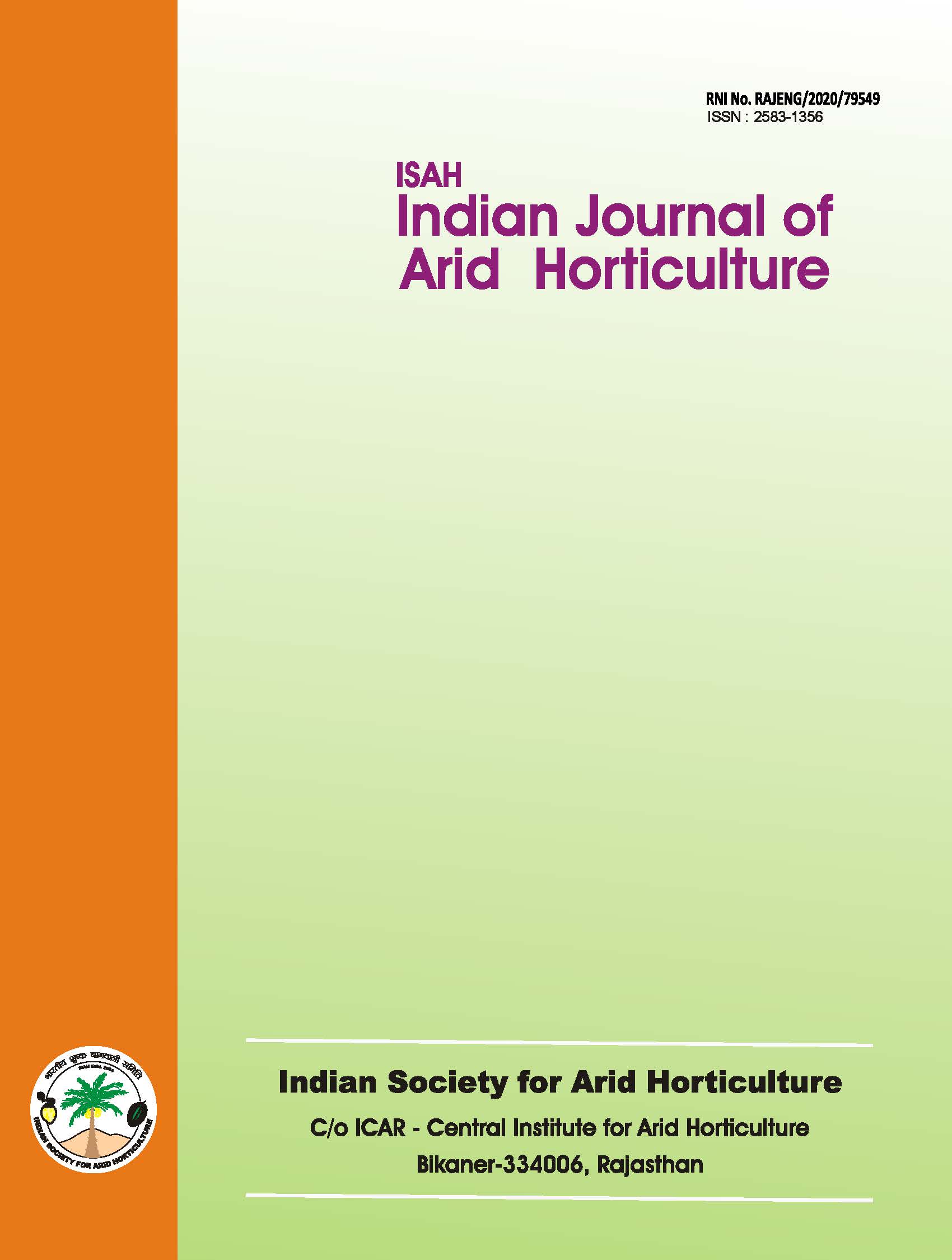Effect of drip irrigation and bioregulators on water use efficiency and fruit yield of Kachri (Cucumis melo var. callosus)
Keywords:
N-acytyl cysteine, photosynthate, cucurbitaceous, bioregulators, bioregulatorsAbstract
Rajasthan, particularly western region comes under hyper arid zone with very scarce water resource. Thus, more crop per drop of water is main motto of any agricultural production system in these region of the state. Kachri is one of the major cucurbitaceous vegetable of the region is grown extensively. The crop is generally grown as rainfed kharif crop. Growing the the crop as irrigated summer crop can be highly profitable. Among the irrigation methods drip irrigation is proved superior as it maintains moisture content at near about field capacity in one hand and eliminates water losses on other hand. The superiority of drip irrigation has been a well established fact particularly in cucurbits (Devaranavadgi et al) (1). Sulphydryl (-SH-) compounds improve phloem translocation of photosynthate and crop productivity. Thus, they act as bioregulators and play an important role in improving water use efficiency through enhanced phloem translocation and yield formation in arid regions. Thiourea (500ppm) significantly increase yield and quality of tubers in potato (Mani et al) (2). Beside thiourea, effect of N-acytyl cysteine and thioglycolic acid (TGA) also influence the fruit yield and water use efficiency of kachri. The information on bioregulators, and drip irrigation on kachri growth and yield are meager. Hence, there is a felt need to generate precise information on irrigation requirement of kachri through drip and effect of bio-regulators on kachri.Downloads
References
Devaranavadgi, V S, Shirahatti, S S and Patil, MG (2011) Effect of different drip irrigation level on growth and yield of bitter gourd (Momordica chanrantia L.) in
semi arid conditions of Karnataka. International Journal of Agricultural Engineering, 4(2):179-182. Mani F, Bettaicb T, Zheni K, Doudech N and Hannachi C (2013) Effect of thiourea on yield and quality of potato (Solanum tuberosum L.). Journal of Stress Physiology & Biochemistry, 9(1):87-95. Manjunatha M V and Manjunatha Hebbara (2010) Response of ridge gourd to various levels of drip and surface irrigation in saline vertisols of canal command, Karnataka. Asian Journal of Soil Science, 5(2):257- 260.

